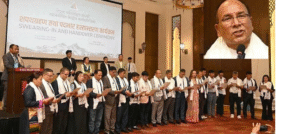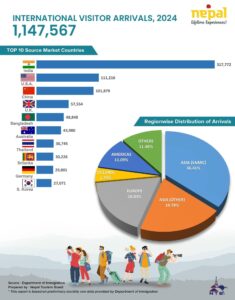Qatar World Cup: 185 Nepalese died in 2013
Owen Gibson and Pete Pattisson in Kathmandu
The extent of the risks faced by migrant construction workers building the infrastructure for the 2022 World Cup in Qatar has been laid bare by official documents revealing that 185 Nepalese men died last year alone.
The 2013 death toll, which is expected to rise as new cases come to light, is likely to spark fresh concern over the treatment of migrant workers in Qatar and increase the pressure on Fifa to force meaningful change. According to the documents the total number of verified deaths among workers from Nepal – just one of several countries that supply hundreds of thousands of migrant workers to the gas-rich state – is now at least 382 in two years alone. At least 36 of those deaths were registered in the weeks following the global outcry after the Guardian’s original revelations in September.
The revelations forced Fifa’s president, Sepp Blatter, to promise that football would not turn a blind eye to the issue following a stormy executive committee meeting. Qatar’s ministry of labour hired law firm DLA Piper to conduct an urgent review and Hassan al-Thawadi, chief executive of the World Cup organising committee, said the findings would be treated with the utmost seriousness, vowing that the tournament would not be built “on the blood of innocents”. The DLA Piper report is expected to be published in the coming weeks.
The Nepalese make up about a sixth of Qatar’s 2 million-strong population of migrant workers. Verified figures for the 2013 death rates among those from India, Pakistan, Sri Lanka and elsewhere have yet to emerge.
The Nepalese organisation working with the families of dead workers to repatriate their bodies and campaign for adequate compensation from the companies that employed them under the kafala sponsorship system said on Friday that Fifa should do more.
The Pravasi Nepali Co-ordination Committee (PNCC), which has cross-checked the figures from official sources in Doha against death certificates and passports, is still receiving new cases on a regular basis. The Guardian has seen evidence of at least a further eight cases, which would take the 2013 total to 193.
The PNCC called on Fifa’s sponsors to reconsider their relationship with world football’s governing body, which awarded the World Cup to Qatar in December 2010.
“Fifa and the government of Qatar promised the world that they would take action to ensure the safety of workers building the stadiums and infrastructure for the 2022 World Cup. This horrendous roll call of the dead gives the lie to those reassurances,” said the PNCC. “These were young or otherwise able-bodied men, with their futures in front of them, families at home and everything to live for. Many have been literally worked to death. Some have met with even more sinister ends. All have been betrayed by Fifa.”
The Guardian investigation last year revealed that at least 44 Nepalese workers had died in Qatar between 4 June and 8 August, more than half of them of heart attacks, heart failure or workplace accidents. But the full list of deaths recorded during the year, collated by the Nepalese NGO from official sources and documents in Doha and seen by the Guardian, shows that the actual figure is much higher.
In June, July and August alone 65 deaths were recorded by the PNCC during summer months when temperatures can regularly top 40C. The causes included traffic accidents, blunt injuries and fractures ascribed to falls and suicide. But more than 65 of the deaths in 2013 are ascribed to “sudden cardiac arrests” and more than half to some kind of heart failure. Campaigners believe the cause of death is often officially listed as a cardiac arrest because it covers a “multitude of sins”.
Asked last year by the Guardian why so many young Nepalese men died of heart attacks, the Qatari labour ministry said: “This question would be better suited for the relevant health authorities or the government of Nepal.”
As long ago as 2011, Fifa said it would work with the International Trade Union Confederation to address labour issues with the Qatari authorities. “We have a responsibility that goes beyond the development of football and the organisation of our competition,” Fifa secretary general Jérôme Valcke said in November 2011.
But the ITUC has remained a strident critic of the lack of progress made by Qatari authorities on the issue, while groups including Human Rights Watch and Amnesty International have continued to highlight the appalling conditions suffered by some of the workers in a £137bn construction boom.
In November, Amnesty warned in a damning report that workers were enduring 12-hour days in sweltering conditions and living in squalid, overcrowded accommodation. The ITUC has warned that up to 4,000 workers may die before a ball is kicked in 2022 without meaningful reform of the kafala system and stringent control of the myriad construction companies and sub-contractors involved.
After the global outcry that followed the Guardian’s coverage, Blatter travelled to meet the Emir of Qatar and declared it was “on the right track” in dealing with the issue. But following a meeting with the ITUC in Zurich a month later, Fifa said that “fair working conditions with a lasting effect must be introduced quickly”.
The PNCC, which has painstakingly cross-checked death certificates and other documentation with official records in Doha, said Fifa and the Qatari government needed to move faster: “Fifa president Sepp Blatter said in October there was ‘plenty of time’ to address this issue. For the labourers dying every week in Qatar to build the infrastructure to host Mr Blatter’s World Cup, there is no time left.”
Attention is also turning to the role of Fifa’s sponsors, with the PNCC joining calls for them to review their relationship with it. Visa and Adidas recently signed new deals until 2022. “Qatar’s failure to disclose or explain these deaths, and Fifa’s failure to monitor them, are alarming in the extreme. We call upon the World Cup’s corporate sponsors – Coca-Cola, Adidas, Visa, Hyundai and Budweiser – urgently to review their arrangements with Fifa,” a spokesman said.
Last month the London mayor, Boris Johnson, travelled to Doha to drum up trade for British business. Foreign Office minister Hugh Robertson held talks with the Qataris aimed at boosting trade and said the UK would “offer support” in delivering the 2022 World Cup.
A spokesman for the Foreign Office insisted the issue of migrant workers was also raised. “Mr Robertson discussed the issue of migrant workers with the Qatari authorities during his recent visit,” he said.”
But the PNCC said that the flow of coffins returning to Kathmandu airport, which continued throughout December, even on Christmas Day, told its own story. “Thanks to the work of the Guardian and other media, this abuse is finally being exposed,” said the PNCC spokesman.
“We call upon civilised governments as a matter of the greatest urgency to demand that Qatar takes meaningful action to protect foreign workers on its soil – including reform of the kafala system of labour, which encourages employers to treat their workers as property rather than human beings.”
The full list of deaths recorded between January and September 2012, also seen by the Guardian, shows that at least 127 Nepalese nationals died during that period and there are believed to have been at least another 70 fatalities during the final three months of that year.
Qatar is spending huge sums at home and abroad in an attempt to position itself as the diplomatic and business hub of the Middle East and secure its position politically and financially for the years ahead.
Qatari officials insist moves are being made to hold construction companies, and their myriad sub-contractors, to existing labour laws, which they argue are among the strongest in the region.
Qatar’s under-secretary to the ministry of labour, Hussain al-Mulla, has said that at least 99% of businesses are complying with the law. The ministry of labour says it is “committed to ensuring that all workers are treated in a fair and just manner”.
The Qatar 2022 supreme committee, which is responsible for staging the World Cup and recently began work on its first stadium, pointed to its own workers’ charter and said it was “committed to the wellbeing, health, safety, security and dignity of every worker”.
“We anticipate 2014 being a big year for the supreme committee in terms of delivery, with up to five stadiums in various stages of construction. With this in mind, and as an evolution of the charter, we have worked hard to develop detailed workers’ standards which will be enforced across all Qatar 2022 projects,” a Qatar 2022 statement said.
“It has been our commitment and our belief from the first day of our bid to host the Fifa World Cup that we can utilise the power of football to accelerate positive social and human development across our country and our region.”
In a statement Fifa said: “Fifa is working towards an urgent solution and as such is continuing to actively engage the dialogue between Qatar and various human rights and labour organisations to ensure that the initiated changes to improve the welfare of migrants workers are progressing with the necessary pace.
“The application of international norms of behaviour is a principle and part of all our activities and expected from any host of our events.
“Fifa firmly believes in the positive power that the Fifa World Cup can have in Qatar as a platform for positive social change, including an improvement of labour rights and conditions for migrant workers.”
Source: Guardian/UK Jan. 24 2014
















